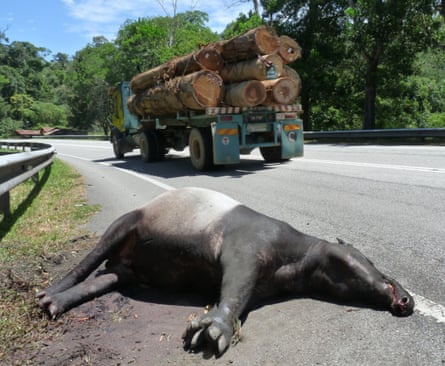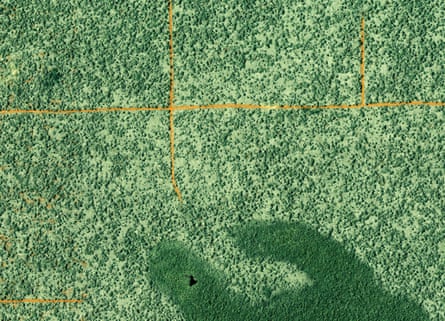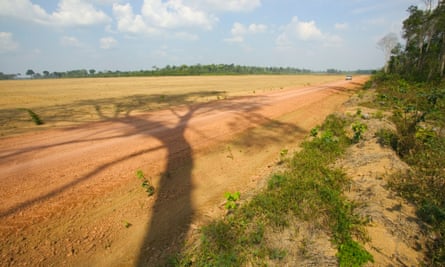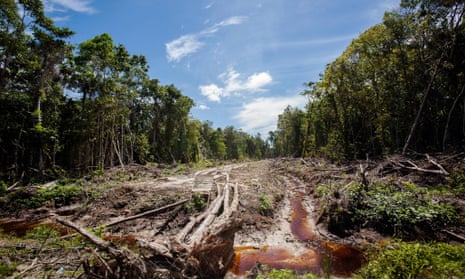Infrastructure is being built at the fastest rate in human history and could unleash a wave of road-building that puts many of the world’s remaining wildernesses at risk over the coming decades, scientists warn.
As developing countries continue to grow their populations and economies, new dams, mines, oil wells and cities will be built to support the expansion. But in a study published on Thursday, researchers said the localised impacts of these projects was “almost trivial” compared to the litany of woe caused by the roads that service them.
“When you’re talking about things like hydroelectric projects, mining projects, logging projects, what these things are doing is creating an economic impetus for roadbuilding and it’s really the roads that are the danger,” said study author Professor Bill Laurance from James Cook University.
“You’re enormously increasing the physical accessibility of that habitat to poachers, to illegal loggers, to land speculators, to illegal colonists.”
He said the damage caused by the indirect consequences of roadbuilding was rarely taken into account during the environmental assessment process.

By 205o the length of the world’s paved roads will have increased from 40 to 65 million km. This does not account for the illegitimate roads ploughed through many of the world’s most vulnerable regions. Laurance says for every kilometre of legitimate road in the Brazilian Amazon three are built illegally by racketeering resource companies.
“Everywhere you look the scale of what’s happening is truly astonishing and quite frightening,” he said.
The value of the world’s infrastructure, currently US$56tn (£37tn), will more than double in the next 15 years. The G20 countries alone have US$60-70tn of construction planned between now and 2030. New roads will underwrite this boom.
“90% of those roads will be in developing countries, which by the way sustain the planet’s most biologically important ecosystems,” says Laurance. “So we’re talking a true tsunami of impacts in the world’s most important environments.”
In the Congo Basin, logging companies have built 50,000km of roads since 2000. During the same period two thirds of the world’s remaining forest elephants have fallen prey to poachers who have gained access to previously impenetrable jungle. The basin is the last stronghold for the species.
Laurance said the hunger for infrastructure investment in the developing world was attracting an increasingly cursory attitude towards environmental stewardship.
“Traditional loaners and donors... are increasingly being supplanted by the far more aggressive Asian Infrastructure Development Bank and the Brazilian Development Bank which place a far smaller premium on environmental concerns,” he said.
His study, published in the journal Current Biology, urges development financiers to account for the wider impacts of roadbuilding and infrastructure development.

Laurance stresses that developing countries should not be impeded from pursuing development. The new routes will access isolated communities, remote resources and open new lands to agriculture.
“It would be unfair for someone from an industrial nation to suggest that a level of investment in infrastructure is not needed. Many nations are trying to catch up and many nations have a serious need both to develop and maintain their infrastructure.”
WWF is closely monitoring plans for a proposed 961km road that will run along the Indo-Nepal border through a landscape populated by Bengal tigers, Asian elephants, greater one-horned rhinoceros and swamp deer. All of which are in danger from poaching, the group says. Like Laurance, the organisation recognises the benefits roads can bring to communities, but urges environmental impacts be taken into account and changes made where they will be severe.
Similarly in Indonesian Sumatra a 400km extension proposed for the Ladia Galaska road will endanger the last place where orangutans, tigers, rhinos and elephants coexist. If the road is built, researchers predict habitat for Sumatran orangutans to decline by 16% by 2030. This would result in the loss of nearly 1,400 apes, 20% of the species global population.
“Where we are saying roads should not be going, is into the world’s last surviving wildernesses,” said Laurance.


Comments (…)
Sign in or create your Guardian account to join the discussion